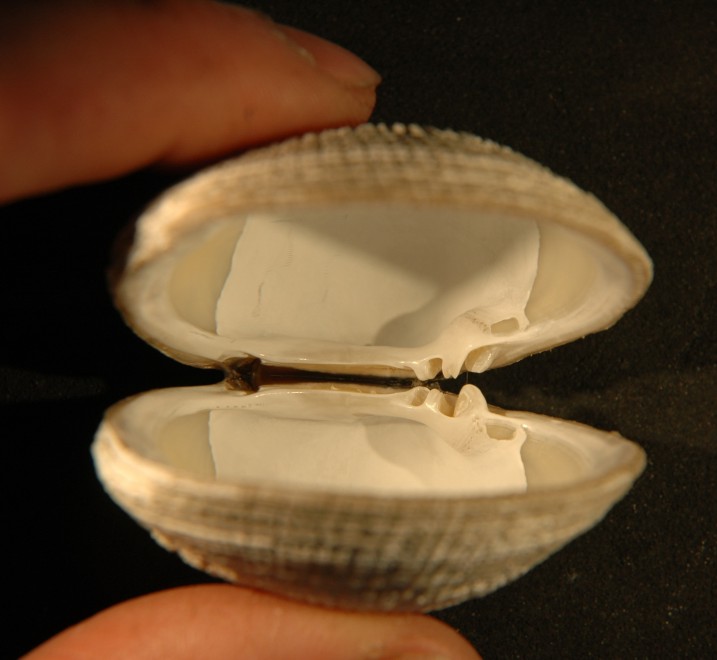Mercenaria mercenaria (Linnaeus, 1758)
Common name(s): Northern quahog

Class Bivalvia
Subclass Heterodonta
Order Veneroida
Family Veneridae
Mercenaria mercenaria (Linnaeus, 1758)Common name(s): Northern quahog |
|
| Synonyms: Venus mercenaria |  |
| Phylum Mollusca
Class Bivalvia Subclass Heterodonta Order Veneroida Family Veneridae |
|
| Mercenaria mercenaria from a local market. | |
| (Photo by: Dave Cowles, July 2007) | |
How to Distinguish from Similar Species: This clam, which is not native to the Northwest, can look quite similar to our native littleneck clam Leukoma staminea. L. staminea is of similar size and shape and also has the distinctive fine teeth along the inside ventral margin of the valves. However, from my observations L. staminea usually has more abundant and prominent radial ribs than does Mercenaria mercenaria, and it may also have colorful markings on its periostracum which M. mercenaria usually lacks.
Geographical Range: Atlantic Ocean (Gulf of Saint Lawrence to Florida, Texas), introduced in some areas of our Pacific coast, especially in San Francisco Bay and several other areas of California, as well as a small population in southern British Columbia.
Depth Range:
Habitat: In stable sand, packed mud, or gravel-clay mixtures in protected areas, usually buried less than 8 cm below the sediment.
Biology/Natural History: This species
is a very important commercial species from the east coast, which has been
successfully established in several areas of California and also in southern
British Columbia. Spawns in 24-25 C water. Anticarcinogenic
agents have been isolated from the tissue.
| Return to: | |||
| Main Page | Alphabetic Index | Systematic Index | Glossary |
General References:
Morris
et al., 1980
Ricketts
et al., 1985
Scientific Articles:
Web sites:
Some individuals have radial ridges on their shell, as seen in this specimen. The lunule cannot be clearly seen but it is in the flattened depression on the top right.

The hinge teeth are prominent.

In this inside view of the shell can be seen the prominent, continuous
pallial
line with a distinct, deep, pointed pallial
sinus. Note also that there are two similarly-sized adductor
muscle scars and the hinge
ligament is external and about 1/3 the length of the shell. The
anterior
end of the shell is down in this view.

This closeup of the hinge shows the three large cardinal teeth in each
valve
which is characteristic of Family Veneridae
Anterior
is down in this view. The left valve is to the left and the right
valve is to the right.
Authors and Editors of Page:
Dave Cowles (2008): Created original page